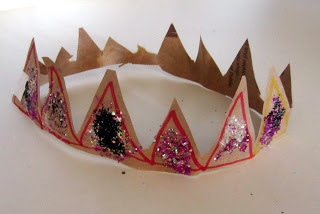Rebecca S. Ramsey's Blog, page 26
November 30, 2018
Christ the King Sunday and Daniel’s Kings
 This children’s sermon was written for Christ the King Sunday, November 25, 2018. The children learned about Daniel in Sunday school this morning so I was hoping to help them connect Daniel’s story with this Sunday’s worship theme.
This children’s sermon was written for Christ the King Sunday, November 25, 2018. The children learned about Daniel in Sunday school this morning so I was hoping to help them connect Daniel’s story with this Sunday’s worship theme.
I brought this crown with me today. I wonder if you know what special Sunday this is.
(Allow children to respond.)
We don’t have kings anymore here. We have people that we hire, that we elect, to help rule our country.
But in Sunday school today, as we shared the story of Daniel, I believe there were some kings, right? In fact two or three. I wonder what you remember about them, what they did in the story.
(Allow children to respond and help them flesh out the story of Daniel.)
Daniel encountered some kings who really did bad things.
But one night he had a dream, and in that dream he envisioned two good kings, in fact they were more holy than kings. One sounds like God- he described him as the Ancient One, sitting on a throne. And the second one- See if you think it sounds like Jesus, even though he dreamed this 600 years before Jesus was born:
“In my vision at night I looked, and there in front of me was someone who looked like a human being.[d] He was coming on the clouds in the sky. He came up to the Ancient King, and the King’s servants brought him before the King.
14 “The one who looked like a human being was given authority, glory, and complete ruling power. People from every nation and language will serve him. His rule will last forever. His kingdom will continue forever. It will never be destroyed.
What do you think? It sounds like King Jesus to me.
The kings of old- like Daniel’s kings- got carried away with their power and forgot something important: that no one is more valuable than anyone else, but Jesus reminds us that we are all worthy of the same love, whether we have lots of things or we don’t have anything, men or women, young or old, no matter what country we’re from or what language we speak.
People from every nation and language will serve him. His rule will last forever. His kingdom will continue forever. It will never be destroyed
We’re all God’s children. Aren’t you glad we have a king like that? Let’s pray.
Dear God, thank you for sending Jesus, the king of our hearts. Help us as we try to treat each other like He did. We love you, God. Amen.
November 26, 2018
The First Sunday of Advent
Welcome to the celebration of the First Sunday of Advent, this Sunday, December 2.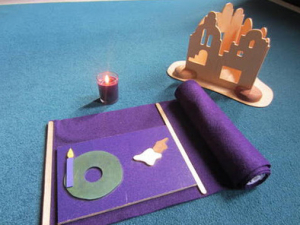 What an exciting time of year!
What an exciting time of year!
This Sunday we focus on getting ready to enter the mystery of Christmas. It’s perfect timing then for us to focus on the prophets’ message that something big was about to happen in Bethlehem. The people didn’t know exactly what or when, but they were told to get ready, to watch and wait.
Our Godly Play lesson begins with a discussion of the color change at church to purple, the color of kings. It’s a great time to talk about what kind of king the people expected and how God surprised them all.
One thing to note: the Godly Play Advent lessons don’t come with wondering questions at the end. I think it’s so helpful to have some discussion questions to let the children process their thoughts on the lessons so I’ve included some of my own questions for this Sunday at the bottom of this blog post. I’ve put copies of these for the storyteller and the person writing the responses in each of your classrooms.
Making a Gift for God- Art Response Idea Starters for the Children
When it comes time to help the children decide what work they want to do–what kind of gift to God they want to make in appreciation for the story– there are several paths they can take, each exploring different themes to the lesson.
Some of the themes include:
1. The theme of Advent–getting ready.
2. The theme of who prophets are and what did they do and say.
3. The idea of Jesus being a light to the world, since we light candles each week in Advent.
Here are some “Gift for God” ideas to add to your own:
Something For All of Us to Do: Gift Bags for Senior Adults
 Frank Smith has asked us again this year to decorate white gift bags for the senior adults for a Christmas gift. They love getting their gift bags decorated by our children. You can have the children use colorful markers to draw symbols of Christmas on the bags, manger scenes, whatever they like. Thanks for helping with this project!
Frank Smith has asked us again this year to decorate white gift bags for the senior adults for a Christmas gift. They love getting their gift bags decorated by our children. You can have the children use colorful markers to draw symbols of Christmas on the bags, manger scenes, whatever they like. Thanks for helping with this project!
For exploring Advent…
1. Make an advent wreath together, or have each child make his own. Here are some we’ve made in the past.



 Paper advent wreaths are a great idea too. I love this one, from second grade a couple of years ago. Each child contributed a leaf or two or a candle.
Paper advent wreaths are a great idea too. I love this one, from second grade a couple of years ago. Each child contributed a leaf or two or a candle.
2. Make an advent chain. Have the children cut out 25 strips of paper each and (using tape or staples) make them into a chain. They could even put a task to do on each (“sing Away in the Manger,” or “read the Christmas story” or “draw an angel,” etc.) and each day in December the child would take off one link in the chain. This is a great way to illustrate waiting and getting ready for Christmas.
See lots of advent chain ideas here.
For exploring the Prophets…
1. Let the children look up some of the verses in which the prophets predict Jesus’ birth or a leader coming out of Bethlehem.
Verses include:
“But you, Bethlehem in Ephrathah, small as you are to be among Judah’s clans, out of you shall come forth a governor for Israel, one whose roots are far back in the past, in days gone by.” –Micah 5:2
King Herod called a meeting of the chief priests and lawyers of the Jewish people, and asked them: “Where is the Messiah to be born?” “At Bethlehem in Judaea”, they replied; and they referred him to the prophecy which reads: “Bethlehem in the land of Judah, you are far from least in the eyes of the rulers of Judah; for out of you shall come a leader to be the shepherd of my people Israel.” Matthew 2:1-6 – NEB
“Surely the Messiah is not to come from Galilee? Does not scripture say that the Messiah is to be of the family of David, from David’s village of Bethlehem?” John 7:41,42 – NEB
Isaiah 7:14. “Therefore the Lord Himself will give you a sign, Behold a virgin shall conceive and bear a son, and shall call His name Immanuel.”
2. The children might want to make a model like the one we use of Bethlehem. They could use their own ideas of what Bethlehem might have looked like, or they could use books to research it.
3. Another option would be for the kids to divide a paper in half (or a mural on butcher paper.) It could be titled something like, “A King Is Coming…” On one side they could draw or list what people expected the king to look like, and on the other side they could draw a manger scene with Baby Jesus.
For exploring Jesus as the Light of the Word, the children could make candle cookies like this one here.
 Susan D’Amato had our fourth graders do this one year and they loved it.
Susan D’Amato had our fourth graders do this one year and they loved it.
The directions are here. (http://familyfun.go.com/recipes/a-lig...)
For more art response ideas, see my Pinterest page, here.
Here are the wondering questions I’ve come up with for this week’s lesson. Enjoy!
1. I wonder about getting ready. I wonder what your family does to get ready to celebrate Christmas.
2. I wonder if there are special things you might do at your house to remember what Christmas is really all about.
3. The prophets told the people of God that a new king was coming. I wonder what you think they expected. What kind of king do you think they thought he would be?
4. I wonder what you think about why God sent Jesus as a baby.
5. In our time together today, we talked about how prophets know the most important things and show the way. I wonder if you remember any prophets from our Sunday school lessons and what it might be like to be a prophet.
Happy First Sunday of Advent!
Love, Becky
November 19, 2018
The Story of Daniel
Hi Godly Play Teachers!
Welcome to The Story of Daniel, the Godly Play story scheduled for this Sunday, November 25. You can find the script in the pink Volume 6, The Complete Guide to Godly Play, 15 Enrichment Presentations for Fall book on p.116-125.

Daniel’s life story provides children with so many themes to discover, each of them so important, including:
*the importance of living a life faithful to God
*the assurance that God will be close to God’s people forever
*if we ask for it, God will give us the courage needed to follow God when it goes against what the world values
*we can question God about the things we don’t understand
*God can sustain us in times of despair and give us hope.
As the children work during their response time, we can give them chances (by asking questions) to talk about these themes. It’s so important that the children don’t just walk away from Sunday school with a lion or a fiery furnace, but their own ideas of how the story applies to them.
Idea Sparkers For Our Give A Gift to God Time
1. Reproduce the story in some way.
Of course the BEST ideas for art response time come from the child herself, but here are some ideas to get our kids thinking. Hopefully they won’t follow anyone’s set of instructions verbatim, but will make something all their own.
There are plenty of directions out there for making artistic representations of Daniel in the Lion’s Den.
1. Here’s one of my favorites, a den of lions and a Daniel, all out of paper cups.
2. There’s a cute lion out of noodles, here, and other lion ideas here.
3. There’s a whole host of Daniel craft ideas here.
4. There’s a paper plate lion here.
5. Children could also make the fiery furnace scene. I found 3 good sites for this, here, here, and here.
2. You could also focus on God’s gift of courage- like the kind Daniel had- by making a bracelet celebrating courage like the ones here.
3. You could celebrate Daniel’s life by making a mural with all the scenes from the story.
4. Our Godly Play Daniel story leaves out the story I remember from my childhood: the part at the beginning, when Daniel was first taken captive to Babylon and asks permission to eat food other than that on the king’s table. You might want to present the story as scripted, and then ask the children if they know the part left out. The children could find it in the Bible (Daniel chapter 1) and figure out how to make it part of the Godly Play story. How would they tell that part of the story? What figure or drawing could they add to the story basket? What does this part of the story have to do with them (and not just about what kinds of food they eat!)
5. For FBC Sunday School teachers, don’t forget that another option is to decorate the white gift bags that we’re making for our senior friends for their Christmas fellowship. I’ll have the bags and stickers in your rooms. Thank you!
For more ideas, see my Pinterest page, here!
I hope these ideas help!
Love, Becky
November 16, 2018
Call Me Morticia, But I Think I’ve Discovered a Dark Secret to Happiness!
 Lately I’ve been feeling a bit down in the dumps.
Lately I’ve been feeling a bit down in the dumps.
If you’re my Facebook friend, you may attribute this to the lovely porta potty in my driveway or the mud pit state of my front yard since the deluge of rain began a few days ago or the fact that a team of workmen just took chain saws to the gigantic silver maple in our front yard, taking the whole beautiful thing down. That tree had a knot hole in the trunk just like Boo Radley’s in To Kill a Mockingbird, where he’d leave sticks of chewing gum or a ball of twine for the neighbor kids, and it’s mammoth leafy self was a big part of why I wanted to buy this house in the first place. But the tree was dropping huge, heavy limbs that could flatten my grandchild, so it had to go.
I could write a depressing post of all the bigger things that are making me mopey, including the general state of humanity. Yay! What a fun read that’d be! But instead, let me share something CREEPY that’s giving me life right now.
It’s an app I bought for my phone that cost me 99 cents and I’m absolutely IN LOVE with it. It’s called WeCroak (yes it is!) and five times a day it  surprises me with texts that say, “Don’t forget, you’re going to die.”
surprises me with texts that say, “Don’t forget, you’re going to die.”
How delightful!
If you click on the text, it gives you a quote from a philosopher or poet or thinker about death.
I first learned about WeCroak from the cover of the November issue of The Christian Century. This week has been so crazy that I haven’t had time to do more than scan the article about it, but what I read was enough to give it a try. The app states that In Bhutan they say that contemplating death five times a day brings happiness, and as upside down as that sounds, it’s proving to be true, at least for me. After four days of repeated reminders of my own mortality, my outlook is becoming slightly different. I have moments where I’m finding some perspective, which is great for a person like me who’s so steeped, so drenched in FEELINGS. (Oh the feelings. Sometimes I wish I could run off to Bhutan or Florence or Idaho for a vacation from my feeling-full brain!)
Don’t forget, you’re going to die reminds me to live the way I want to live, to say the things that are important to me to people who are important to me, to prioritize the things that are important to me, to give to causes that are important to me, to call senators about things that are important to me, to have the fun that’s important to me, and to do it all now. Not NOW, but now. WeCroak is gentle.
Last April I started bullet journaling, which is sort of a cross between journaling and keeping a calendar, and as part of my bullet journal I started leaving room in my daily agenda to keep up daily with a certain set of tasks. Most of it is boring stuff that I need motivation for, including my daily plans for cooking dinner, flossing my teeth and doing sit ups, etc. (Now you know I’m even weirder than you thought!) But I also left a rectangle for each day in which I am supposed to record what holy thing happened that day- what experience was a brush with the sacred, with God.
As I look over all those rectangles from the past year, I see lots of empty spaces. But amongst the things I did write down, I find four general classes of things, including things children have said or done, experiences out in nature or among strangers, and things I’ve experienced in worship or at churchy events. But by far, most of my sacred experiences happen with people who are struggling with some kind of pain. Of course God would hang out there– I don’t know why that surprises me. When someone shares their pain with me, the worries or the sadness or the sickness or the disappointment or fear, I so often find God’s presence there.
Maybe facing the idea of my own death is kind of like that. When I think about it five times a day, it begins to feel like God is tapping me on the shoulder, just to say hi. Now, if I believed in a mean sort of God, a vindictive, petty God, who doesn’t love us all in spite of ourselves, this might be terrifying. But it’s not. It’s just a friendly tap. It’s a tap that says, Hey there. Love you.
If this creeps you out and doesn’t cheer you one bit, then here, focus on this pic of my beautiful yard I took from my front steps yesterday .
.
At least it’s not yours!
Love you!
Becky
November 12, 2018
The Exile and the Return
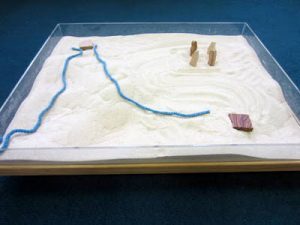 Hi Godly Play Teachers!
Hi Godly Play Teachers!
Welcome to the Exile and Return, the Godly Play story scheduled for this Sunday, November 18.
Last week we shared the story of the ark and the temple, and talked about meeting God in a special place and honoring him with certain routines that both honored God and helped remind the worshipers of the sacredness of being close to God.
At the end of the lesson, we read Solomon’s prayer of dedication of the Temple, where he prays, “But God, will you really live here with us on earth? The whole sky and the highest heaven cannot contain you. Certainly this Temple that I built cannot contain you either…” This week, we think about this again as we learn about what happened when God’s people were taken away from Jerusalem and its temple, which they had believed to be God’s home.
Some themes to explore:
Where do we find God? What if we suddenly have no temple or tabernacle or special routines or things to honor God? Can we still meet God?
What do we do when we’re very afraid, when bad things happen to us? What do we pray for? What does God want us to do?
What does it mean to be homesick? What were God’s people homesick for during the story? Were they homesick for God?
What changes have you been through that have been hard or scary for you? What did you do? Who gave you help? What should we remember when those times come?
What does it mean to be faithful? How is it different to be faithful in hard times versus in easy times?
Some activity ideas to add to your own, to help children make a gift to God in thanks for the story:
Reproduce the story.
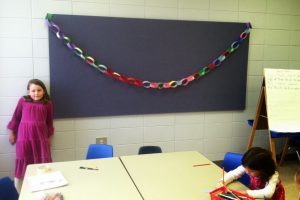 Children could make their own physical elements of the Godly Play story, with blue yarn for the rivers. (Or maybe they can think of another way to represent them.) Pieces of wood for the cities. Can they make a chain out of pipe cleaners or strips of paper? (While they do this, teachers can talk about what the chain means–what it means to be in exile.) What could they use to make the people of God?
Children could make their own physical elements of the Godly Play story, with blue yarn for the rivers. (Or maybe they can think of another way to represent them.) Pieces of wood for the cities. Can they make a chain out of pipe cleaners or strips of paper? (While they do this, teachers can talk about what the chain means–what it means to be in exile.) What could they use to make the people of God?They could draw or paint with watercolors a scene from the story: the destruction of the temple, the sad journey away from Jerusalem, the happy rebuilding of the temple.
Older children could use markers to trace the path of God’s people on a photocopied map. Could they make a map of their own? One for the class
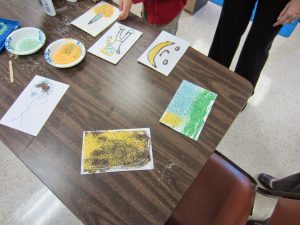
Children could use colored sand to make a desert scene.
Explore themes from the story.
Children could take a large sheet of paper, divide it down the center into 2 parts, label the left side Times We Are Sad Or Scared, and the other side What We Can Do. Then the children can draw or paint pictures to illustrate both sides.
Children could draw or paint or do a collage on the subject of Where and When I Meet God Today. Is it in nature? In church? At home reading the Bible? Being with friends? This would be a great addition for our new bulletin board. This could also be done as a class project on butcher paper (like a mural.)
What does it mean to be faithful? Children could make a collage or drawing or mural showing what it means to be faithful to God. Does it mean coming to church and worshiping together? Bringing an offering? Praying? Trusting? What else?
Children could draw or write about a time they were homesick. What helped them get through it? What would God want us to do when we feel homesick?
Some great verses to get children thinking:
“We sat down and cried by the rivers of Babylon when
we remembered Zion. How can we sing the song of the
Lord in a strange land?” (Psalm 137:1, 4)
“Praise the Lord, all nations! Praise Him all people! For
His loving-kindness toward us is great. And the truth of
the Lord lasts forever. Praise the Lord.” (Psalm 117)
See my Pinterest page for the story here for more ideas. [image error]
November 5, 2018
The Ark and the Temple
Welcome to the Ark and the Temple, the Godly Play story scheduled for this Sunday, November 11.
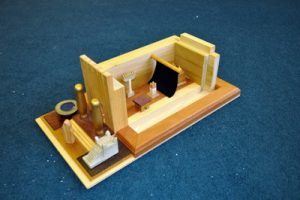 For a girl who could spend days moving furniture and little people around a dollhouse, I simply adore this lesson! I also love it because it explores the idea of God’s abiding presence and helps us question exactly where God is. Where can we meet God? If it is in a church or temple, how do we keep that space sacred? If God truly meets us everywhere, anywhere, then what does that say about the sacredness of the space we occupy in our everyday lives? Which makes me think of a favorite song of mine, but that’s another story. (Go here, if you want a treat!)
For a girl who could spend days moving furniture and little people around a dollhouse, I simply adore this lesson! I also love it because it explores the idea of God’s abiding presence and helps us question exactly where God is. Where can we meet God? If it is in a church or temple, how do we keep that space sacred? If God truly meets us everywhere, anywhere, then what does that say about the sacredness of the space we occupy in our everyday lives? Which makes me think of a favorite song of mine, but that’s another story. (Go here, if you want a treat!)
This story works wonderfully as a continuation of The Ark and the Tent, and then Ruth and David’s stories. Before, the people took the tent with them as they traveled, and learned that God goes with them wherever they go. Now, the people have settled and learn that God is not only present during times of transition but in ordinary times of daily life.
Another interesting theme to address is the idea of the usefulness of things in the worship of God. When the ark and the commandments were taken during battle and they didn’t physically have them in the tent, were they really lost? When King David returned them, dancing into Jerusalem, what was he really celebrating?
Another very important theme to cover is that there is no physical place that can contain God. I’ll have Solomon’s temple dedication prayer typed up and in your room by Wednesday night this week. If you’d like to make it into a scroll to read during the lesson, as the script suggests, feel free. I believe we have some dowel sticks in the resource room. Balling up the paper and staining it with tea makes it look older and makes for a more dramatic presentation, if you like.
One other thing I didn’t mention before was the idea of making/offering sacrifices. Do we still offer sacrifices to God today? What kinds of sacrifices would God love? What kinds are important and why?
I wonder if a trip to our own sanctuary might be interesting to the children, after they study the temple. What is alike and what is different? What kind of sacrifices do we still make? Is there a way we make ourselves more acceptable to God before entering?
Some activity ideas to help the children get started:
Pieces of the temple
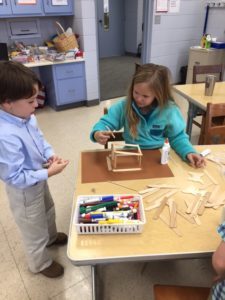 A few of the classes began a few weeks ago making special parts of the temple/tent. You could continue that this week, and you could even set up the items in a temple of your own making. Kids could make an ark, the ten commandments, a table with 12 pieces of bread, a menorah, a laver, and an altar. (See all the ideas and photos here.)
A few of the classes began a few weeks ago making special parts of the temple/tent. You could continue that this week, and you could even set up the items in a temple of your own making. Kids could make an ark, the ten commandments, a table with 12 pieces of bread, a menorah, a laver, and an altar. (See all the ideas and photos here.)
Could we make edible versions of all these things? And then make an edible temple? See my Pinterest site here, for ways to do this. [image error]
October 29, 2018
When Church Makes Us Cry
 Sometimes church makes us cry.
Sometimes church makes us cry.
It did for Sadie (not her real name) on Sunday.
The kids had finished their doughnuts and fellowship time when it happened (which means they had played air hockey and drew with markers and looked at books and begged me at least thirteen times to bend my steadfast rule: Only ONE Doughnut to a Customer Because You’re Peppy Enough, Kiddo.) We had prayed the long list of prayer requests, I had sent them out the door to their Sunday school classes, and I’d just started chatting with a parent about Evolving Faith, the INCREDIBLE retreat I had just returned from the previous night, when one of our teachers appeared at the door with Sadie.
“Can you help us?” Jennifer asked. “Sadie is having a hard time coming into our Sunday school class today.”
I could tell. Rivulets of tears were jig-jagging down Sadie’s seven-year-old face.
“I’m sorry you’re sad, Sadie. Want to go with me to my office so we can talk about it?”
Sadie sniffled and gave me a nod.
Once we sat down together, I asked her, “Did something happen to make it hard to come to Sunday school?”
She sniffled, her chin quivering. She stared at me with big eyes, trying to find the words to say.
“Take your time. Did something happen this morning?”
She shook her head no.
“Did something happen yesterday that made you sad?”
Sadie nodded.
“Would you like to tell me about it?”
She nodded again. After a long pause, she said, “Last night we went to a wedding. We had cake and then…then… Lisa and I were playing tag, and I…I….”
I handed her a tissue and she wiped at her face.
“I got lost.”
“You got lost?”
“I didn’t know where anybody was,” she sobbed. “The people didn’t know me. I was scared and all alone. Nobody found me. Nobody even looked.”
“Oh, Sadie. That is a scary thing. Were you still feeling afraid this morning?”
She nodded. “I didn’t want it to happen again.”
Over the next few minutes I tried to reassure her that her church is a safe place for her. That even though it can be a big place, we keep our eyes on her and make sure she’s safe because she’s a treasure to us and a treasure to God. We love her, no matter what she does or doesn’t do. Just like the Good Shepherd would never quit searching for the lamb that is lost, we would never quit looking for her. She belongs to us and belongs to God, no matter what.
“Do you feel safe enough now to go to Sunday school?” I asked.
“Uh huh,” she nodded, and then frowned at me. “I guess I missed the doughnuts.”
“Oh, that’s too bad. How about a Jolly Rancher from my candy jar?”
“I guess it wouldn’t hurt.”
As I walked Sadie back to Sunday school, I thought about the auditorium full of strangers I’d sat with and sang with and prayed with and listened with at Evolving Faith on Friday and Saturday, self-described doubters, dreamers, and survivors of church. You could call some of us lost. Many had been wounded by evangelical Christianity. Many had found themselves lost in the wilderness, questioning whether it was time to give up on church. Many wanted to hold fast to Jesus- they just weren’t sure about the folks around him. Some had been pushed away from the table. Others found that church wasn’t a safe place for them to be their true selves – to share their true thoughts and doubts and questions. Many were like me, who love Jesus and church, but also feel drawn to the searchers, to those in the wilderness. Who wonder what else the church could be and do.
Nobody found me. Nobody even looked.
Thank you, Evolving Faith, for reminding me that when I sit down at the table with only people like myself, I miss out on the rich feast of wisdom God has to offer. How can I understand the sacred stories of God’s pursuit of displaced people if I never ask displaced people what they hear in the scripture? How can I truly understand Jesus, the man who stood with and identified with people in the margins, without being led by marginalized people? How can I learn how to love God and resist the empire, when I’m all tangled up in the empire-and hold tight to the privileges it gives me?
Nobody found me. Nobody even looked.
God, help me keep my eyes open. Help me look. Help me see who’s missing from my table. Who can show me something about God that I have not seen? Who can share their life with me so that I can see God in it?
Saturday morning was my favorite part of the retreat. All four women were ON FIRE with God and by the time they finished preaching and we stood to sing, my eyes stung with tears and my right hand was sore from trying to get it all down, these life changing words from Kaitlin Curtice, Austin Channing Brown, Sandra Maria Van Opstal and Nish Weiseth. There was so much to learn!
We stood to sing and our voices joined together in beautiful harmony, we women and men, young and old, gay and straight, found and lost, wounded and broken, hopeful and skeptical, searching and had it up to here. Even a service dog in the back had to join in the song!
As I went down in the river to pray
Studying about that good old way
And who shall wear the starry crown
Good Lord, show me the way!
O searchers, let’s go down,
Let’s go down, come on down
O searchers, let’s go down
Down in the river to pray.
Lord, open our hearts to each other!
Amen!
Thank you to OUCHcharley for this flickr photo through Creative Commons.
The Psalms
 Welcome to The Psalms, the Godly Play story scheduled for this Sunday, November 4, based on the book of Psalms.
Welcome to The Psalms, the Godly Play story scheduled for this Sunday, November 4, based on the book of Psalms.
If you’re teaching at FBG, I’ve emailed you the story script, which includes the first part of the David story from last week, found in the pink Enrichment Presentations for Fall, p.81. If you are not a Sunday school teacher at First Baptist Greenville and would like a copy of the Psalms story script, just email me and I’d be happy to send it to you. Or join the blog mailing list and it will be sent to you, along with 9 other Godly Play style story scripts that I’ve written and am happy to share.
In the script, we use the first part of the David story and then explore the idea that the Psalms writers went to God with all kinds of different emotions. We discuss how we can pray to God when we feel afraid, happy, angry, peaceful, sad or worried, and joyful, or when we feel sorry for what we’ve done. With each different emotion, we share a Psalm (or 2 or 3) that the Psalm writers experienced and shared with God.
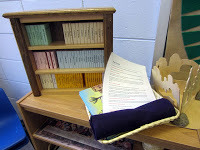 To share the Psalms, we’re going to use a beautiful book, Psalms for Young Children, written by Marie-Helene Delval and illustrated by Arno. In this book, Ms. Delval has adapted the psalms for children in a way that is so easy to read and to relate to. I’ve purchased one for each class (except for 3rd grade, which already had a copy.) You’ll find it in your story basket, which I left near your Bible bookcase. I put it there to remind you (and me) that you’ll need the Bible Bookcase as you tell the story. (You’ll take the Psalms book out and place it on the underlay in part of the story.
To share the Psalms, we’re going to use a beautiful book, Psalms for Young Children, written by Marie-Helene Delval and illustrated by Arno. In this book, Ms. Delval has adapted the psalms for children in a way that is so easy to read and to relate to. I’ve purchased one for each class (except for 3rd grade, which already had a copy.) You’ll find it in your story basket, which I left near your Bible bookcase. I put it there to remind you (and me) that you’ll need the Bible Bookcase as you tell the story. (You’ll take the Psalms book out and place it on the underlay in part of the story.
By the way, the Psalms in this book are shared in order (by number.) They’re so short that I think you’ll find it hard to stop reading them!
To help the children follow along with the different emotions we’ll be discussing I’ve made emotion cards for each class.
Older children might enjoy comparing the Psalms as written in the Bible with Marie Helene Delval’s adaptations. They might like making their own adaptations as well. You might want to choose one Psalm to focus on, like #23 or 139.
The wondering questions are included in the story script.
Ideas for Your Give a Gift to God time:
1. Writing our own Psalms–Have children pick an emotion that they sometimes feel and write God a prayer or song that they might pray or sing while feeling that way.
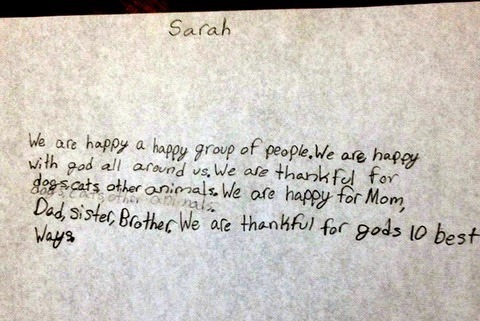
2. Write a psalm showing how you feel today. Draw a picture to go with it.
Or read a psalm to a friend that shows how you feel.
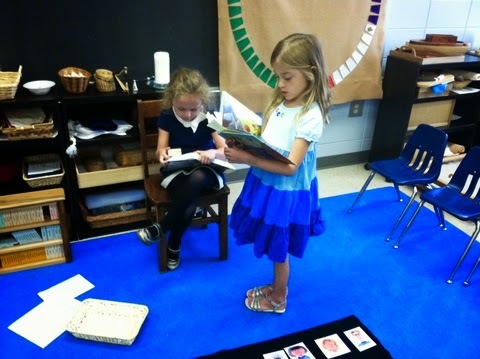
3. Illustrate a Psalm. Choose a psalm and illustrate it, like Arno did in Psalms for Young Children. (Any Psalm would be good. If you want, you could 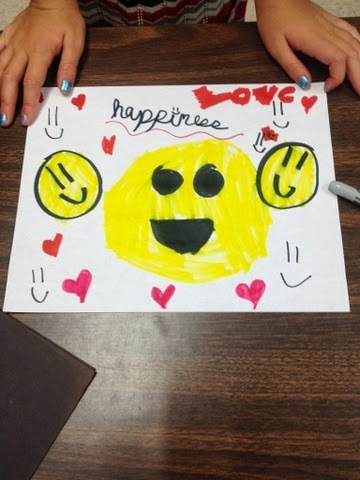 choose the psalm for the children, like #23 or 139.)
choose the psalm for the children, like #23 or 139.)
4. Write a psalm together as a class, and then let the children illustrate it individually or together.
5. Work out a tune that fits a psalm that you like. Or write your own to sing.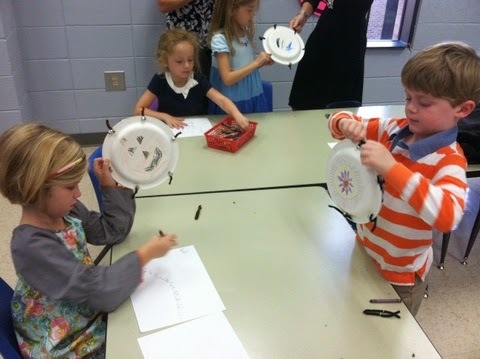 6. Make instruments to play while singing a psalm. You can find directions to make a simple tambourinehere, and a lyre here.
6. Make instruments to play while singing a psalm. You can find directions to make a simple tambourinehere, and a lyre here.
Enjoy! [image error]
October 22, 2018
The Story of David
 Welcome to the story of King David, the Godly Play story scheduled for this Sunday, October 28, based on 1 Samuel 16-31, 2 Samuel and 1Kings 1-2. You can find the script for the story in the pink Enrichment Presentations for Fall book, p.78-85.
Welcome to the story of King David, the Godly Play story scheduled for this Sunday, October 28, based on 1 Samuel 16-31, 2 Samuel and 1Kings 1-2. You can find the script for the story in the pink Enrichment Presentations for Fall book, p.78-85.
This week’s story is another one (like Ruth and Samuel) that fits nicely after the story of the ark and the tent. And it follows right into the next story on our schedule: the Psalms, (to be followed by the Ark and the Temple.)
Some of the story’s themes which you might want to help the children think about:
1. We can come to God with all sorts of feelings (as in the Psalms—we’ll explore this one more next week)
2.God can help us be brave enough to do what is right and needed.
3. Friendship is a gift from God.
4. God uses people, even with their faults.
5. God forgives our mistakes when we ask for forgiveness.
Ideas for the Make a Gift for God Time:
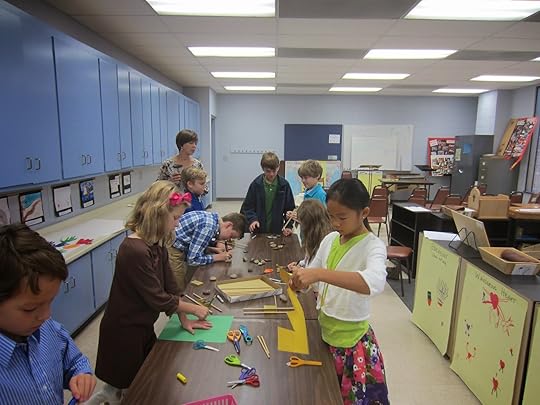
Children choose how to respond to the story and get started!
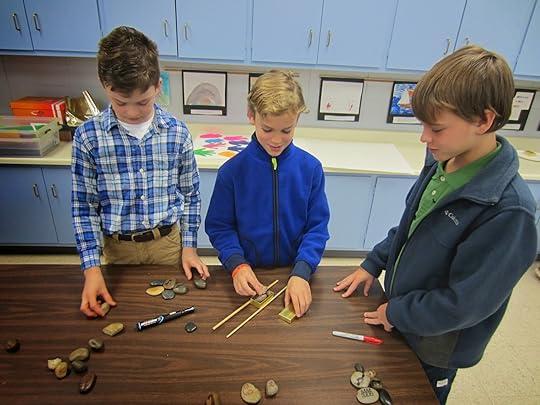
Some children drew symbols of David’s life on stones. You can see another made an ark of the covenant.
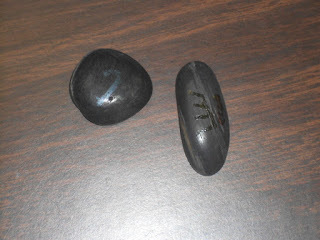
Stones with symbols of David’s life
1. Children could reproduce the elements of the
story in some way.
* Make a harp
*Make a crown for King David
*Make an ark of the covenant
*Make a parable box for the parable that Nathan told David (there is plenty of felt in the resource room)
*Make a drawing of Jerusalem- or a watercolor.
2. Children could paint symbols of David’s life (shepherd’s crook, bottle of incense, two friends, crown, ark, etc) on small stones. There are stones in the resource room.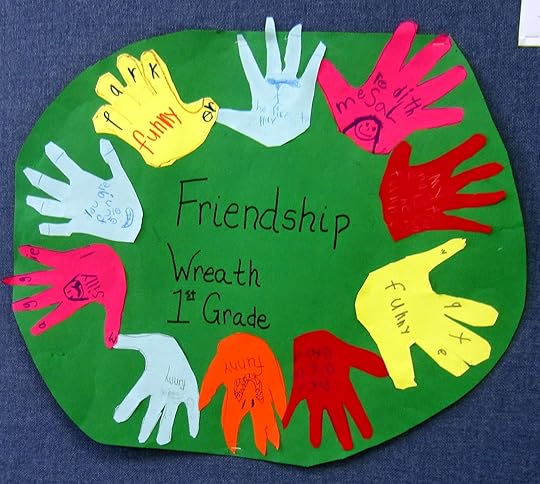
3. Children can celebrate David’s childhood by making David with the sheep. Go to the site here, for plenty of options for crafting sheep. (Scroll down to “sheep”)
4. Children could sculpt a David and Goliath out of play clay.
5. The class could work on a mural of David’s life with one long piece of butcher paper- assigning parts of his life to individual children to illustrate.
6. Children could focus on the friendship between Jonathan and David and explore what kind of friendship God celebrates.
Find more art response ideas at my Pinterest page, here.
October 15, 2018
How to See God in the World–and the Fruits of the Spirit
 This children’s sermon was written to accompany a sermon about seeing God in both the miracles and the mundane. The scripture focus was the passage from John 20:24-29, when Jesus appeared to Thomas and encouraged him to touch and believe. So the question I wanted to broach with the kids was how do we find/see God in the world around us. Maybe God Is Like That Too, by Jennifer Grant, is a perfect book to help children think about this question. It’s also a great one for thinking about the fruits of the spirit.
This children’s sermon was written to accompany a sermon about seeing God in both the miracles and the mundane. The scripture focus was the passage from John 20:24-29, when Jesus appeared to Thomas and encouraged him to touch and believe. So the question I wanted to broach with the kids was how do we find/see God in the world around us. Maybe God Is Like That Too, by Jennifer Grant, is a perfect book to help children think about this question. It’s also a great one for thinking about the fruits of the spirit.
Good morning, girls and boys. Were you listening and watching as our fifth graders acted out the scripture? The time when Jesus appeared to some of the disciples after he had been killed on the cross, and Thomas wasn’t there, so he didn’t believe it? And then what happened?
It would be so nice if Jesus would appear to us right now, so we could see him and ask him questions and believe. But maybe he does show us his presence in other ways. I brought a book today to share with you that’s about that very thing. I’m going to read it quickly, but you can find it in our gathering room and take your time reading it. It’s called, Maybe God Is Like That Too, and it’s by Jennifer Grant.
(Read the book. It’s a short one, but powerful.)
We might not be able to see Jesus like the disciples did, but maybe we don’t need a miracle. We can find signs of God’s spirit all around us if we look.
Let’s pray: Dear God, thank you for all the everyday miracles that happen before our eyes, signs of you in the way we treat each other and the way we treat our world. Help us as we try to live the fruits of your spirit, so that you can use us, God, to show people what you are like. We love you, God. Amen.

